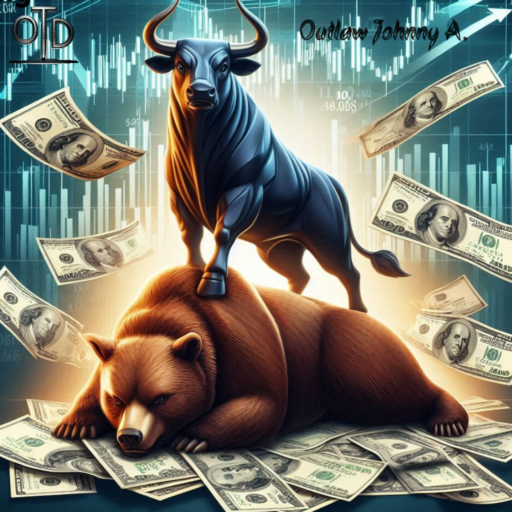President Trump announced sweeping new tariffs today, April 2, 2025, on what he calls “Economic Independence Day” or “Liberation Day.” Let me analyze the key tariffs and their potential economic impacts.
Major Tariffs Announced Today
Baseline Global Tariff
- A 10% baseline tariff on all imports to the U.S., taking effect on Saturday, April 6.
Country-Specific “Reciprocal” Tariffs
- China: 34% tariff.
- European Union: 20% tariff.
- These higher country-specific tariffs will take effect on April 9, 2025.
Previously Announced Tariffs Now Integrating with Today’s Plan
- Automobiles: 25% on imported cars (effective April 3) and auto parts (effective May 3).
- Steel and aluminum: 25% (effective since March 12, 2025).
- Canada and Mexico: 25% tariffs (previously implemented in February).
Upcoming Sector-Specific Tariffs
- Pharmaceuticals: Trump has suggested tariffs of up to 25% on imported pharmaceuticals.
- Additional tariffs targeting semiconductors and potentially critical minerals.
Potential Economic Impacts
Immediate Market Reaction
U.S. stock markets dropped in response to the announcement, continuing a downward trend that has wiped $5 trillion off the value of U.S. stocks since mid-February as investors anticipated these measures. Goldman Sachs has already raised its recession forecast and inflation outlook while lowering its GDP projection in response to tariff uncertainty.
Inflation Concerns
Outside economists have warned that these tariffs could increase living costs for the average U.S. family by thousands of dollars annually. The immediate investor reaction shows gold and Treasury bonds rallying, indicating that investors may be looking to reduce risk.
Manufacturing and Supply Chains
For the auto industry specifically, analysis by Michigan-based think tank Anderson Economic Group suggests the cost of producing vehicles at U.S. plants will rise by between $3,500 and $12,000 per vehicle due to reliance on international parts. Factories worldwide saw activity slump in March as businesses braced for Trump’s new tariffs, with U.S. manufacturing activity contracting after two months of growth.
Global Response and Retaliation
Canada has already announced retaliatory tariffs, and the European Union is preparing countermeasures expected by mid-April. A White House official stated, “This is not a negotiation. It is a national emergency,” suggesting limited interest in diplomatic solutions.
Recession Risk
Olu Sonola, head of U.S. economic research at Fitch Ratings, warned that “many countries will likely end up in a recession” if these tariff rates remain in place for an extended period.
Professional Analysis
Based on these findings, I believe the economic impact will likely develop across several timelines.
Short-term (1-3 months)
- Accelerated inflation as import costs rise.
- Market volatility as investors reassess business impacts.
- Supply chain disruptions occur as companies adjust purchasing strategies.
- Consumer hesitation arises as prices rise and the availability of some goods becomes uncertain.
Medium-term (3-12 months)
- Significant retaliatory measures from major trading partners create further market instability.
- Reshoring of some manufacturing, but with higher production costs.
- The potential Federal Reserve response to combat the slowdown in growth and the acceleration in unemployment is through lower interest rates. Even in the face of rising inflation.
- Business investment hesitation due to uncertainty.
Long-term (1-3 years)
- Structural changes to global supply chains are occurring as companies adapt.
- Higher baseline inflation is embedded in the economy.
- Potential recession if inflationary pressures and trade conflicts persist.
- Some domestic manufacturing growth, but potentially offset by losses in export-oriented sectors.
The tariffs represent a fundamental shift in U.S. trade policy that could reshape global economic relationships. While they may benefit some domestic industries in protected sectors, the broader economic impact appears likely to include higher consumer prices, market instability, and increased recession risk. The outcome will depend significantly on the international response and whether temporary accommodation and negotiations emerge to moderate these measures over time.
Evidence Supporting a Slowdown
- Tariff Size and Scope: President Trump has implemented numerous tariffs today. This scale of tariff will disrupt supply chains and pricing models.
- Consumer Confidence Impact: There’s compelling evidence that uncertainty around tariffs is already affecting consumer sentiment. The University of Michigan’s consumer sentiment survey showed a significant decline to 57.9 in March 2025, a 10.5% drop from February and the lowest level since November 2022. This deterioration spans political affiliations.
- Price Impact on Vehicles: Industry experts predict that tariffs could raise the price of new cars by thousands of dollars, even for cars not directly affected by tariffs, as the cost of imported parts increases. According to a Wall Street Journal report cited by CarEdge, auto insurance rates are susceptible to tariffs because higher car prices lead to higher repair costs, which then drive up insurance premiums.
- Potential Decline in Production: If the tariffs proceed as planned, disruptions to North American vehicle production could amount to “20,000 fewer vehicles produced per day, which is about a 30% hit to production.” This would further constrain supply and potentially drive prices higher.
Slow down, yes; recession, no
- Strong Labor Market: Currently, the unemployment rate is at 4.0%, and average hourly earnings are rising faster than the inflation rate, providing consumers with spending power that could help cushion economic shocks.
- Rising Wages and Employment: Annual wage growth increased to 4.1% in recent data, which is “consistent with an economy that continues to expand, though at a very moderate pace.” This provides some buffer against economic contraction.
- Employment and Wages: The strong labor market does provide a buffer against severe economic contraction, as you suggest.
Inflation Prediction
- Auto Price Increases: According to experts, car prices could rise by between $2,000 and $12,200 for some models due to tariffs. These increases would directly contribute to inflation.
- Used Car Price Pressure: Industry data shows that during previous supply constraints in 2021, used car prices jumped 32% as new car production declined, suggesting we could see similar patterns with these tariffs.
- Insurance Rate Increases: Insurance rates have already risen 11.8% over the past year, and tariffs on trade partners are forecast to send insurance rates another 5% higher in 2025. This will compound the inflation effect.
- Broader Inflationary Effects: Economic analysts predict that while tariffs might boost domestic investment long-term, “in the short run, however, it will be inflationary and… could make new vehicles something of a luxury item.”
“Used Car Domino Effect”
- Rising Demand for Used Vehicles: Economists forecast that “US consumers will likely hold on to their existing cars for longer and may switch to buying used cars, so used car prices will rise” because of tariffs.
- Supply Constraints in the Used Market: Industry analysts predict that lessees wary of purchasing tariff-inflated vehicles will hold onto their leased vehicles longer, potentially tightening up used vehicle inventories. This supply constraint would drive up prices.
Slow Down
- Deportations and Labor Market: Studies of past mass deportations under the Obama administration found that when almost half a million undocumented immigrants were removed from the labor pool, “44,000 U.S.-born workers also lost their employment.” This suggests deportation may compound rather than mitigate economic disruption.
- Economic Interdependencies: Research indicates that deportations reduce tax revenue both through the direct loss of taxes paid by unauthorized immigrants and through reduced taxes from US-born workers who lose their jobs as a result. This could further strain economic growth.
Worst Case Scenario!
If the countries that are subject to tariffs retaliate, the proverbial shit will hit the fan. Markets will fall precipitously. If that happens, get your wallet out and start buying. Remember what Warren Buffett says. “Be fearful when everyone is greedy, and greedy when everyone is fearful.” There may be an opportunity soon.
Summary: TLDR
The data strongly supports inflation concerns, particularly regarding automobiles, insurance, and used car markets.
Research indicates deportations could exacerbate economic challenges by disrupting labor markets and reducing overall economic activity.
The scenario based on current data is:
- A period of slowed growth that may qualify as a mild recession.
- Notable inflation in automobile-related sectors.
- Significant pressure on used car prices and insurance rates.
- Substantial uncertainty for businesses and consumers may further limit spending.
If current tariffs remain, I expect
- Growth will remain slow (below 1.7% in the next two quarters) and pick up toward the end of the third quarter into the fourth quarter of 2025.
- A period of stagflation. (slow growth accompanied by inflation).
- Unemployment will rise.
- Growth will slow considerably but not reach recession levels.
- The Federal Reserve will come to the rescue and lower rates sooner rather than later.
- The market dropped to bottom late in the third quarter or early fourth quarter. Two things that would change that prediction. If the Federal Reserve signals lower rates before then or the S&P 500 reaches 4800-5100.
- Growth stocks remain under pressure. Pick the ones you like now.
The bear is having an absolute field day, practically doing a victory dance as it chases the poor bull right out of the financial district. Do not be that stubborn investor who thinks they are smarter than everyone else—nothing like being the last optimist standing. The Bull is on an extended vacation and will not be bothering to return until one of those oh-so-special catalysts I brilliantly pointed out (in an earlier post) materializes. But hey, why bother reading my previous insights? If your crystal ball works better than my analysis, I would like to know where I can get a crystal ball just like yours.

